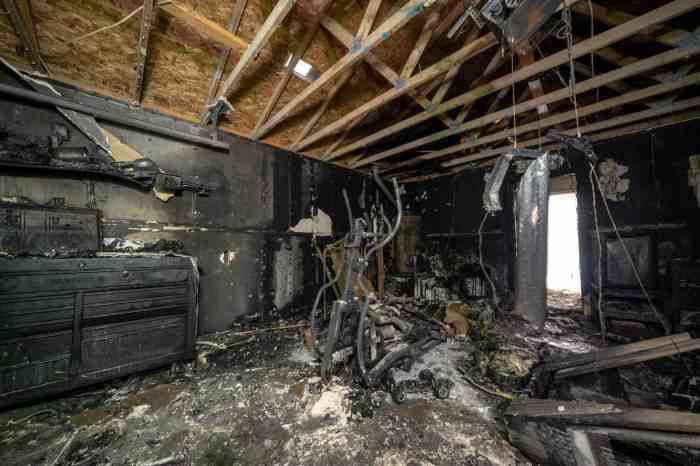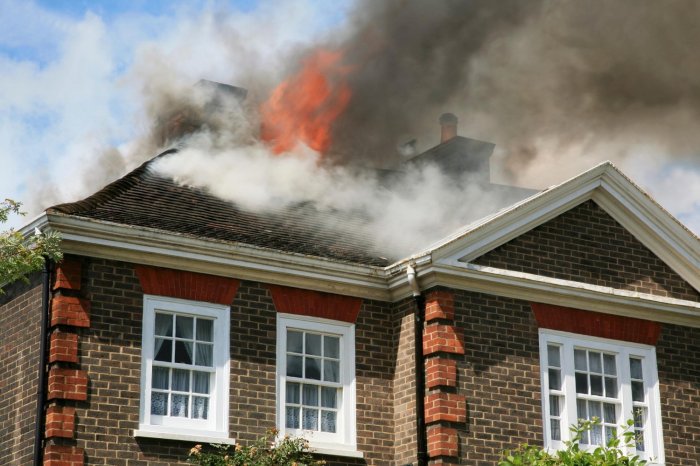In the aftermath of a fire, quick and efficient restoration services are essential to bring your property back to its former glory. This article delves into the importance of fire damage restoration services, the process involved, specialized equipment and techniques used, health and safety considerations, and handling insurance claims.
Let's explore how professionals tackle the aftermath of a fire and restore your property to its original state.
Importance of Fire Damage Restoration Services

After experiencing a fire in your home or business, immediate restoration is crucial to minimize further damage and ensure the safety of occupants.
Risks of Delaying Fire Damage Restoration
- Increased structural damage: Delaying restoration can lead to the weakening of structures, making the building unsafe for occupation.
- Health hazards: Soot and smoke residue can pose health risks if not properly cleaned and removed in a timely manner.
- Mold growth: Moisture from firefighting efforts can promote mold growth if not addressed promptly, adding to the restoration costs.
Benefits of Professional Restoration Services
- Expertise and experience: Professional restoration services have the knowledge and experience to assess the damage accurately and provide effective solutions.
- Specialized equipment: Restoration professionals use specialized equipment to remove soot, smoke odor, and water damage efficiently.
- Time-saving: Professionals can expedite the restoration process, minimizing downtime and allowing you to return to a safe environment sooner.
Process of Fire Damage Restoration
When it comes to fire damage restoration, there are several key steps involved in the process to ensure the property is properly cleaned, repaired, and restored to its pre-fire condition.Assessing the Damage and Creating a Restoration Plan:
Assessment and Planning
After a fire, the first step is to assess the extent of the damage to the property. This involves inspecting the structural integrity, identifying areas that require immediate attention, and creating a detailed restoration plan. The restoration plan Artikels the steps needed to clean, repair, and restore the property effectively.Cleaning, Repairing, and Restoring the Property:
Cleaning and Repair
Once the assessment is complete and the restoration plan is in place, the next step is to begin the cleaning and repair process. This involves removing debris, soot, and smoke residue from the property. Specialized equipment and techniques are used to clean and sanitize the affected areas thoroughly.
Repairs are then made to any damaged structures or systems within the property.
Restoration
The final step in the fire damage restoration process is restoration. This includes restoring the property to its pre-fire condition by replacing damaged materials, painting, and ensuring that all systems are functioning correctly. The goal is to make the property safe, clean, and habitable once again for the occupants.Overall, the process of fire damage restoration is crucial in ensuring that a property is properly cleaned, repaired, and restored following a fire.
By following a systematic approach that includes assessment, planning, cleaning, repairing, and restoring, restoration professionals can help property owners recover from the devastation of a fire effectively.
Specialized Equipment and Techniques
When it comes to fire damage restoration, professionals rely on specialized equipment and techniques to effectively restore properties to their pre-fire condition. These tools and methods are specifically designed to address the unique challenges posed by fire damage.
Equipment Used in Fire Damage Restoration
- Air Scrubbers: These machines help to remove smoke particles and odor from the air, improving air quality.
- Ozone Generators: Ozone can neutralize odors by altering the chemical composition of the particles causing the smell.
- Thermal Foggers: These devices release a fog of cleaning solution that penetrates surfaces to eliminate smoke odors.
- HEPA Vacuums: High-efficiency particulate air vacuums are used to capture and remove soot and other particles from surfaces.
- Moisture Meters: These tools help to detect hidden moisture that can lead to mold growth after a fire.
Specialized Techniques in Fire Damage Restoration
- Soot Removal: Professionals use dry sponges and cleaning solutions to carefully remove soot from surfaces without spreading it further.
- Structural Cleaning: Techniques such as soda blasting or dry ice blasting are used to clean and restore structural elements damaged by fire.
- Odor Neutralization: Specialized techniques like thermal fogging or ozone treatments are employed to eliminate stubborn smoke odors.
- Content Cleaning: Items affected by fire are carefully cleaned and restored using techniques such as ultrasonic cleaning or immersion cleaning.
Differences from General Cleaning or Restoration Services
Fire damage restoration requires a unique set of tools and techniques that are specifically designed to address the challenges posed by fire and smoke damage. General cleaning or restoration services may not have the specialized equipment or expertise needed to effectively restore a property after a fire.
The focus on odor removal, soot cleaning, and structural restoration sets fire damage restoration apart from general cleaning services, making it a specialized field that requires trained professionals and specialized tools.
Health and Safety Considerations
When dealing with fire damage restoration, it is crucial to consider the health and safety implications associated with the process. Professionals in this field take specific measures to ensure the safety of both the restoration team and the occupants of the property.
Potential Health Hazards
During a fire, various toxic substances are released into the air, including carbon monoxide, soot, and other chemicals. These can pose serious health risks if inhaled or come into contact with the skin. In addition, mold growth can occur in the aftermath of a fire, leading to respiratory issues and other health problems.
Ensuring Safety
Fire damage restoration professionals wear personal protective equipment (PPE) such as masks, gloves, and suits to shield themselves from harmful substances. They also implement proper ventilation techniques to remove smoke and contaminants from the property, ensuring a safe environment for all.
Importance of Proper Ventilation and Protective Gear
Proper ventilation is essential to eliminate smoke odor, improve air quality, and prevent mold growth. Additionally, wearing protective gear minimizes exposure to hazardous materials, reducing the risk of health issues for the restoration team and the occupants of the property.
Insurance Claims and Documentation

When it comes to dealing with fire damage, navigating the insurance claims process is crucial in ensuring that you receive the necessary financial support for restoration. Proper documentation is key to a successful claim, and fire damage restoration companies can play a significant role in assisting with this process.
Steps in Filing Insurance Claims
1. Contact your insurance company immediately after the fire incident to start the claims process.
2. Provide a detailed description of the damage and losses incurred during the fire.
3. Document all communication with your insurance company, including claim numbers and adjuster information.
4. Submit any required documentation, such as photos, inventory lists, and estimates for repairs.
5. Follow up with your insurance company regularly to ensure the progress of your claim.
Tips for Documenting Damage
- Take photos and videos of the damage before any cleanup or restoration efforts begin.
- Make a detailed inventory of all damaged items, including descriptions, quantities, and values.
- Keep all receipts related to fire damage repairs, temporary accommodations, and other expenses.
- Obtain multiple estimates for restoration work to ensure accurate reimbursement.
Role of Fire Damage Restoration Companies
Fire damage restoration companies can assist you in documenting the damage for insurance purposes by:
- Providing detailed assessment reports of the extent of the damage.
- Offering itemized lists of damaged property and estimated costs for restoration.
- Coordinating with your insurance adjuster to ensure a smooth claims process.
- Completing the necessary repairs and restoration work efficiently and effectively.
Wrap-Up
As we conclude our discussion on fire damage restoration services, it becomes evident that timely intervention and professional expertise are key in rebuilding what was lost. By understanding the process, equipment, safety considerations, and insurance aspects, you are better equipped to navigate the challenges posed by fire damage.
Trust in the experts to guide you through this difficult time and restore your property with care and precision.
Query Resolution
What are the potential risks of delaying fire damage restoration?
Delaying fire damage restoration can lead to further structural damage, mold growth, and increased health risks due to lingering smoke particles.
How do professionals ensure safety during the restoration process?
Professionals ensure safety by using protective gear, proper ventilation, and following industry standards to prevent exposure to harmful substances.
What role do fire damage restoration companies play in assisting with insurance claims?
Fire damage restoration companies help in documenting the damage accurately, providing evidence for insurance claims, and negotiating with insurance providers on behalf of the property owner.














